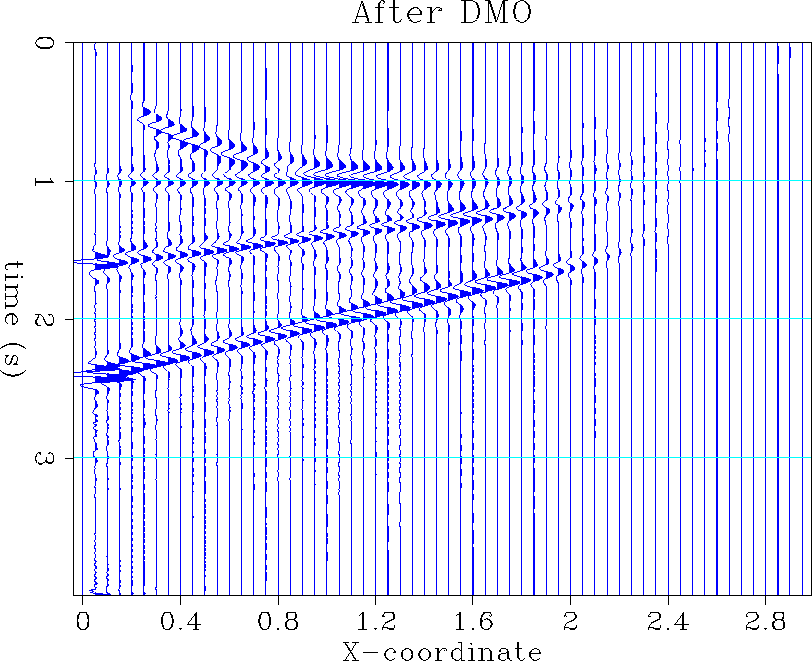The anti-aliasing is performed by effectively convolving a triangle function
with the output trace. The width of the triangle, ![]() , usually
exceeds the time sampling rate,
, usually
exceeds the time sampling rate, ![]() , for the steepest dips.
Therefore, the triangles overlap and produce an undesirable
amplitude increase. The number of overlapping triangles is
proportional to their width. Thus, a reasonable method of amplitude
correction is to divide the convolution triangles by
, for the steepest dips.
Therefore, the triangles overlap and produce an undesirable
amplitude increase. The number of overlapping triangles is
proportional to their width. Thus, a reasonable method of amplitude
correction is to divide the convolution triangles by ![]() , as
follows:
, as
follows:
| |
(7) |
|
Dmo2
Figure 7 A slice in the 3-D data after DMO with Black's amplitudes, corrected for spherical spreading and the triangle effect. |  |
Figure (7) shows the same section of the 3-D cube as Figure (6), but the DMO process now involves the two correction factors for spherical spreading and triangle width. The AVO effect along the horizontal reflector is restored, and the relative amplitude of the different reflectors is better balanced and closer to the amplitude distribution in Figure (5). The third rule is now more completely verified although some singularities occur at the near offset traces (close to x = 0).